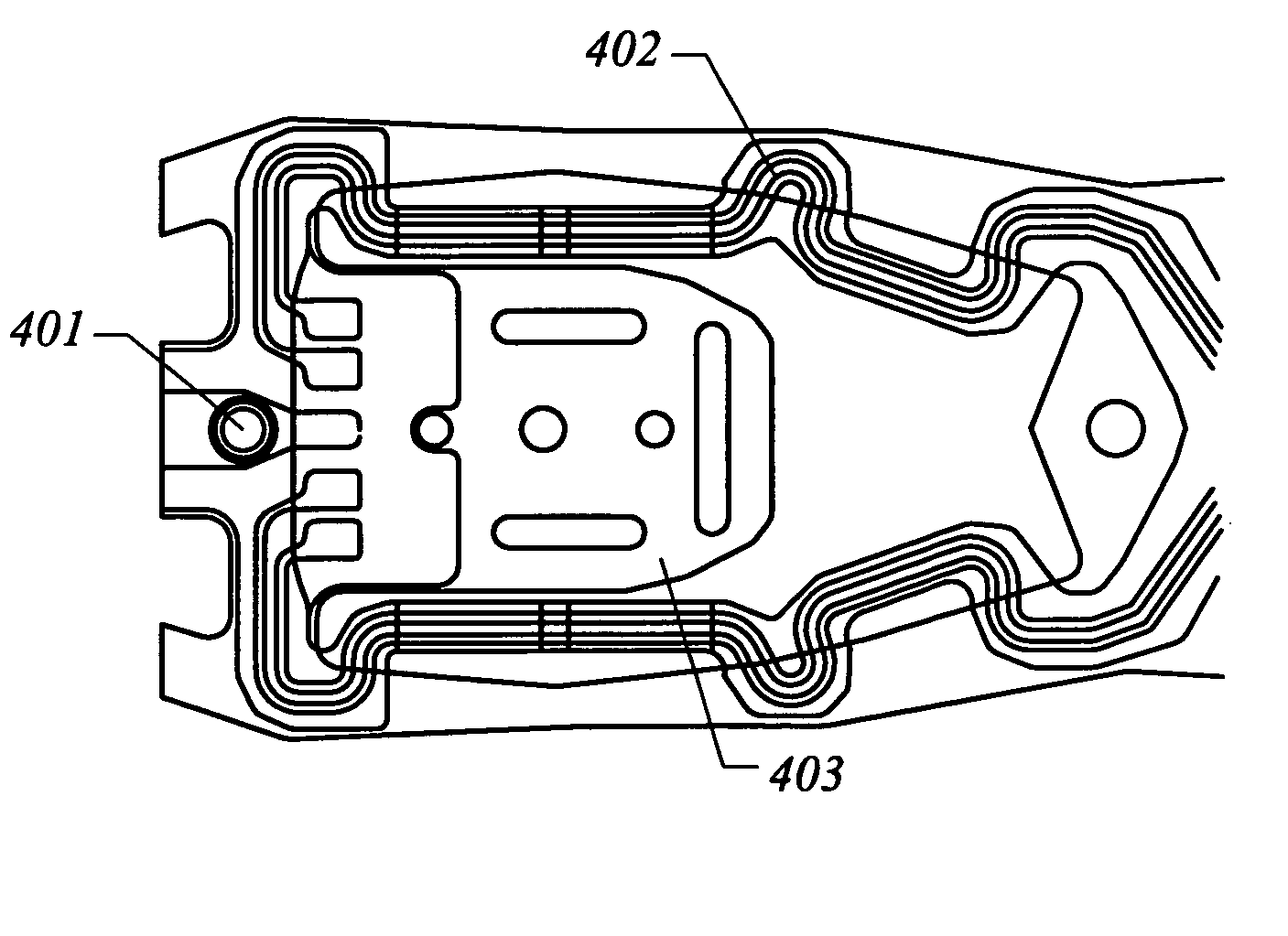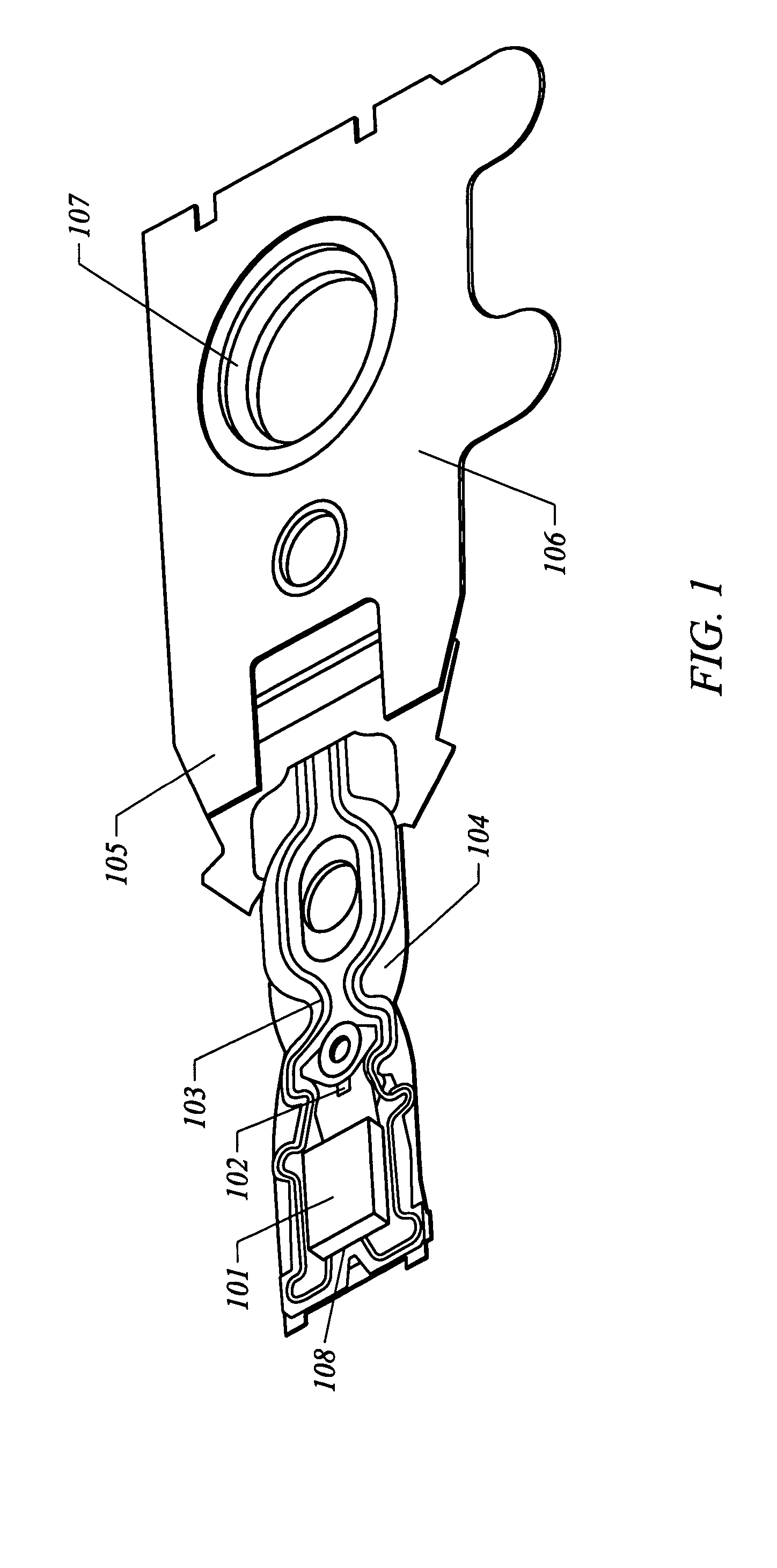Method to form electrostatic discharge protection on flexible circuits
a flexible circuit and protection technology, applied in circuit electrostatic discharge protection, integrated arm assemblies, instruments, etc., can solve the problems of over-all hdd cost margin, thin film head element is susceptible to low voltage esd damage, signal is susceptible to static noise distortion, etc., to prevent esd and circuit noise, esd damage, and broader applicability.
- Summary
- Abstract
- Description
- Claims
- Application Information
AI Technical Summary
Benefits of technology
Problems solved by technology
Method used
Image
Examples
Embodiment Construction
[0053] According to the present invention, techniques for preventing ESD and circuit noise are provided. More particularly, the present invention prevents ESD damage during the assembly of HDD. As an embodiment according to the present invention, a dissipative carbon base thin film is coated on a flexible circuit to drain the potential electrostatic charges during circuit assembly and interconnect processes. The coating is formed by using a FCVA process. Yet, it would be recognized that the invention could use other ion-deposition processes and have a much broader range of applicability on any electronic apparatus that are susceptible to electrostatic damage and static noise.
[0054]FIG. 1 is a head gimbal assembly (HGA) top-view diagram. As shown, the apparatus includes a MR head 108 on a slider 101 and is bonded on gimbal 102 by adhesives. The interconnect is formed by connecting the MR head 108 to a flexible circuit 103. This flexible circuit is then routed on a suspension load be...
PUM
 Login to View More
Login to View More Abstract
Description
Claims
Application Information
 Login to View More
Login to View More - R&D
- Intellectual Property
- Life Sciences
- Materials
- Tech Scout
- Unparalleled Data Quality
- Higher Quality Content
- 60% Fewer Hallucinations
Browse by: Latest US Patents, China's latest patents, Technical Efficacy Thesaurus, Application Domain, Technology Topic, Popular Technical Reports.
© 2025 PatSnap. All rights reserved.Legal|Privacy policy|Modern Slavery Act Transparency Statement|Sitemap|About US| Contact US: help@patsnap.com



